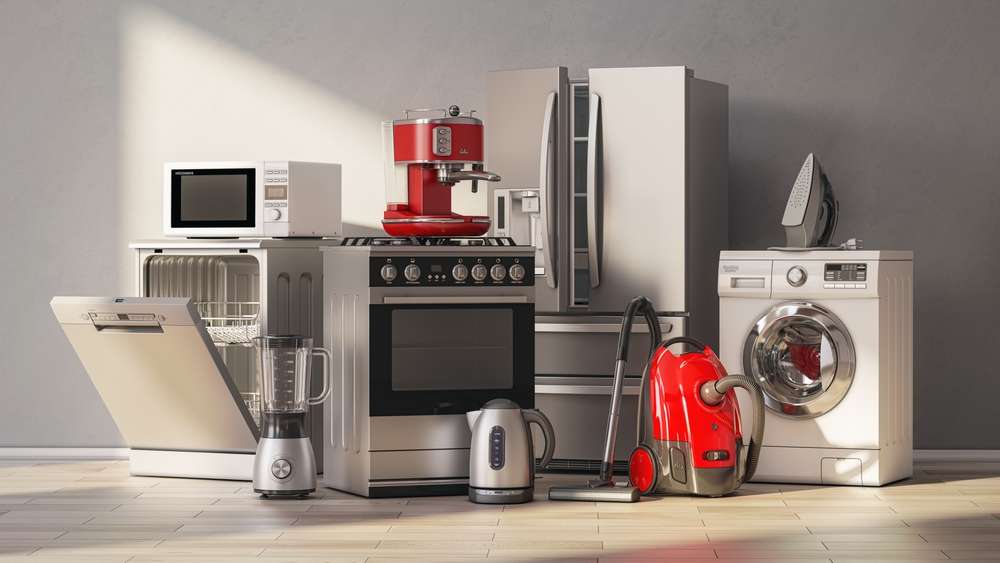Understanding Everyday Appliances
Appliances are the machines that make daily life easier, from keeping food cold to helping us wash clothes and cook meals. This article explains how common appliances work, their history, and how they have changed the way people live and take care of their homes. By learning about different appliances, we can see the important role they play in shaping our routines and saving us time each day.

The Evolution of Home Appliances Through History
The history of home appliances reveals humanity’s ingenuity in simplifying domestic work. Early mechanical devices appeared in the late 1800s when electricity became commercially available. The first electric washing machine debuted in 1908, replacing laborious hand washing. Refrigerators followed in the 1920s, revolutionizing food storage and reducing waste. The post-World War II economic boom saw appliances become household staples rather than luxuries, with ownership rates soaring as middle-class families embraced modern conveniences. Each decade brought refinements—from energy efficiency standards in the 1970s to smart technology integration in the 2000s—showcasing how appliances evolved from simple mechanical tools to sophisticated digital companions.
How Common Household Appliances Actually Work
Understanding how everyday appliances function reveals fascinating engineering principles. Refrigerators operate through compression cooling cycles, where refrigerant changes between gas and liquid states to remove heat from the interior. Washing machines combine motors, pumps, timers, and water valves in orchestrated sequences to clean fabrics. Microwave ovens generate electromagnetic waves at specific frequencies that excite water molecules in food, creating friction and heat. Modern dishwashers utilize high-pressure water jets, detergent dispensers, and heating elements working together with precise timing. Though complex internally, these appliances present simple interfaces that mask the sophisticated physics, thermodynamics, and electronic controls enabling their functionality. This blend of advanced technology with user-friendly operation defines the brilliance of modern appliance design.
Essential Types of Household Appliances
Household appliances typically fall into several distinct categories based on their primary functions. Major appliances, often called white goods, include refrigerators, freezers, washing machines, dryers, dishwashers, and cooking ranges—these form the foundation of a functional home. Small kitchen appliances encompass countertop devices like toasters, blenders, coffee makers, and food processors that enhance cooking capabilities. Climate control appliances include air conditioners, heaters, humidifiers, and dehumidifiers that maintain comfortable living environments. Home entertainment systems, though sometimes classified separately, include televisions, sound systems, and gaming consoles. Cleaning appliances beyond laundry include vacuum cleaners, steam mops, and air purifiers. Each category serves specific domestic needs while collectively creating the comprehensive ecosystem of modern home management.
Energy Efficiency and Sustainability in Modern Appliances
Energy efficiency has become a central focus in appliance development, driven by environmental concerns and consumer cost considerations. ENERGY STAR certification, established in 1992, provides standardized metrics for comparing efficiency across models. Modern refrigerators use approximately 75% less energy than their 1970s counterparts despite offering increased capacity and features. Advanced technologies like inverter compressors, improved insulation materials, and smart power management contribute to these gains. Manufacturers increasingly incorporate recycled materials in production while designing for eventual disassembly and recycling. Water-efficient washing machines and dishwashers significantly reduce resource consumption without sacrificing performance. Many appliances now include eco-mode settings that optimize energy use during operation, while standby power consumption has dramatically decreased through regulatory standards and improved engineering. These developments demonstrate how sustainability has evolved from a marketing feature to a fundamental design principle.
Breakthrough Innovations in Appliance Technology
Recent appliance innovations have focused on connectivity, artificial intelligence, and enhanced user experiences. Smart refrigerators with interior cameras allow remote viewing of contents via smartphone apps, helping with grocery planning and reducing food waste. Voice-activated assistants integrate with cooking appliances to provide hands-free operation and step-by-step recipe guidance. Machine learning algorithms in washing machines automatically detect fabric types and soil levels, optimizing water and detergent usage accordingly. Self-diagnostic capabilities alert users to maintenance needs before critical failures occur, extending appliance lifespan. Induction cooking technology offers precise temperature control with greater energy efficiency than traditional electric or gas methods. Robotic vacuum cleaners map living spaces and establish cleaning routines with minimal human intervention. These advancements represent how appliance functionality continues expanding beyond basic mechanical operations into intelligent household management systems that anticipate user needs.
Common Appliance Costs and Typical Lifespans
Understanding the financial commitment and expected durability of household appliances helps consumers make informed purchasing decisions. The investment varies significantly across appliance categories and feature levels.
| Appliance Type | Average Cost Range | Typical Lifespan | Annual Operating Cost |
|---|---|---|---|
| Refrigerator | $800-$3,000 | 10-15 years | $60-$100 |
| Washing Machine | $400-$1,500 | 8-12 years | $75-$125 |
| Dishwasher | $400-$1,200 | 8-10 years | $35-$50 |
| Range/Oven | $650-$2,000 | 13-15 years | $45-$90 |
| Microwave | $100-$500 | 5-10 years | $15-$25 |
| Vacuum Cleaner | $80-$600 | 5-8 years | $10-$20 |
Prices, rates, or cost estimates mentioned in this article are based on the latest available information but may change over time. Independent research is advised before making financial decisions.
Premium appliances typically offer extended warranties, improved durability, and advanced features that may justify higher initial costs through extended service life and reduced energy consumption. Maintenance costs should also factor into purchasing decisions, as regular servicing can significantly extend appliance longevity. While budget options may seem appealing initially, their shorter lifespans and potentially higher operating costs can result in greater long-term expenses compared to mid-range alternatives with better efficiency ratings.
Conclusion
Everyday appliances represent remarkable technological achievements that silently enhance our daily lives. From their humble mechanical beginnings to today’s interconnected smart systems, these devices continue evolving to meet changing consumer needs and environmental considerations. Understanding how appliances work, their various types, efficiency considerations, and emerging innovations helps consumers make informed choices that balance functionality, sustainability, and budget requirements. As technology advances, tomorrow’s appliances will likely continue this trajectory toward greater intelligence, resource efficiency, and seamless integration with our living spaces.




